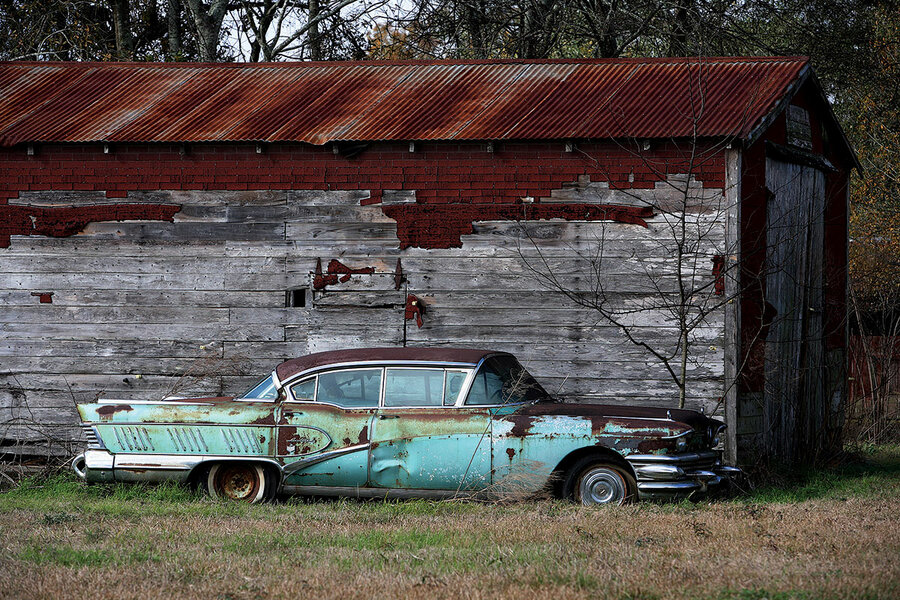Reliability took a back seat to style and price
Loading...
I bought my first car months before I was eligible to get a driver’s license – I couldn’t wait. It was a faded tan four-speed Volkswagen Squareback (Google it), and I drove it back and forth in our driveway. I paid $420 for it, a hard-fought $30 less than the asking price. By the time I took my driver’s test, I was expert at shifting into reverse and first gear. Our driveway was only 75 feet long, but I’d still manage to accelerate to 30 miles an hour before slamming on the brakes, screeching to a stop just inches from the garage door. On those days my mom would often leave the house at a jog, returning only when she calculated I was low on gas.
That car was the first of many I owned that had mechanical quirks and character traits that forced me to adapt, improvise, and grow. The car would run fine for about 20 minutes, then decide it was done for a while. After napping for half an hour or so, it would allow itself to be restarted and then run for another 20 minutes. Nobody ever figured out why.
I sold that Squareback to my dad, and he drove it to the station every day – a 10-minute ride – without incident.
My next car was a well-polished, used Triumph Spitfire. Lovely to look at, but such a nasty disposition. Breakdown highlights include the middle of the Tappan Zee Bridge, the Queensboro Bridge, Madison Avenue and 46th Street at 5:15 p.m., the FDR Drive at 1 a.m., and finally (that is, terminally) on Interstate 80 at mile marker 111 in the Pennsylvania mountains. While some older British cars had trouble starting in rainy weather, mine was sidelined by humidity. Experience taught me to park it at the top of a hill, or somewhere I could round up four or five people to help me push-start it.
After my wife and I married, I bought another Squareback, canary yellow, from a trustworthy fireman in the dark for $300. On the drive home, I hit a bump and my seat dropped an inch on the left side. Savvy car buyers check for rust by seeing if a screwdriver will punch through the floor pans. I could punch through with my pinkie. That was the car we drove to take my 5-year-old nephew to see “The Black Cauldron.” On the way home, he started laughing nervously in the back seat. “Uncle Chuck,” he said, “I can see the road. Through the floor.”
“You are looking at where the car is not,” I said. “Keep your feet on where the car is.” He laughed again, a thin, pitiable laugh, and held his little legs straight out in front of him for the rest of the trip. This may be the first time my sister is hearing this, so – sorry!
The cheapest car I ever bought? A derelict Ford Pinto station wagon that hadn’t run for two years, for $50. When I started it for the first time (with jumper cables and bulletproof optimism), oil shot out in every direction from rust holes in the oil filter. I replaced the filter, added two quarts of oil, charged the battery, and ran it for two years without a hitch.
But the long-standing leader in my string of questionable and inexpensive transportation is a rot-hollowed Porsche 914 I bought as a teen. It had no heater or exhaust system. A shade-tree mechanic in the next town welded in a makeshift olio of pipes and baffles, and we (somehow) got it through inspection. By the time it finally gave out, it was a miracle of invention and compromise. The throttle cable was a length of cord for a Venetian blind. Many of the heavier pieces of the undercarriage were secured with old leather belts from Goodwill.
My heady days of duct tape engineering are behind me, now. The state in which I live requires rigid annual vehicle inspections, and I’ve reluctantly concluded that most repairs are best done by real mechanics with real tools and parts. The last car I bought was a mechanically sound domestic SUV, and I spent several thousand dollars for it. But parsimonious habits die hard: Last week I brought home an old 10-speed bike from the dump. I cleaned it, pumped up the tires, oiled the chain, and put it back on the road.
Didn’t spend a dime.







